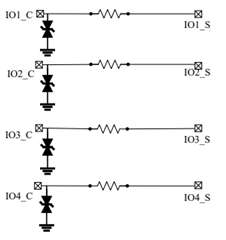Other Parts Discussed in Thread: TPD4E05U06
Hi,
ESD224 is a bi-directional protection device, and TPDxE05U06 is a uni-directional protection device. In a 3.3V system, the uni-directional protection device can clamp the negative spike on the digital line, but not for bi-directional protection device. So, can TI give the pros and cons for ESD224 compared to TPDxE05U06?
Thanks.


